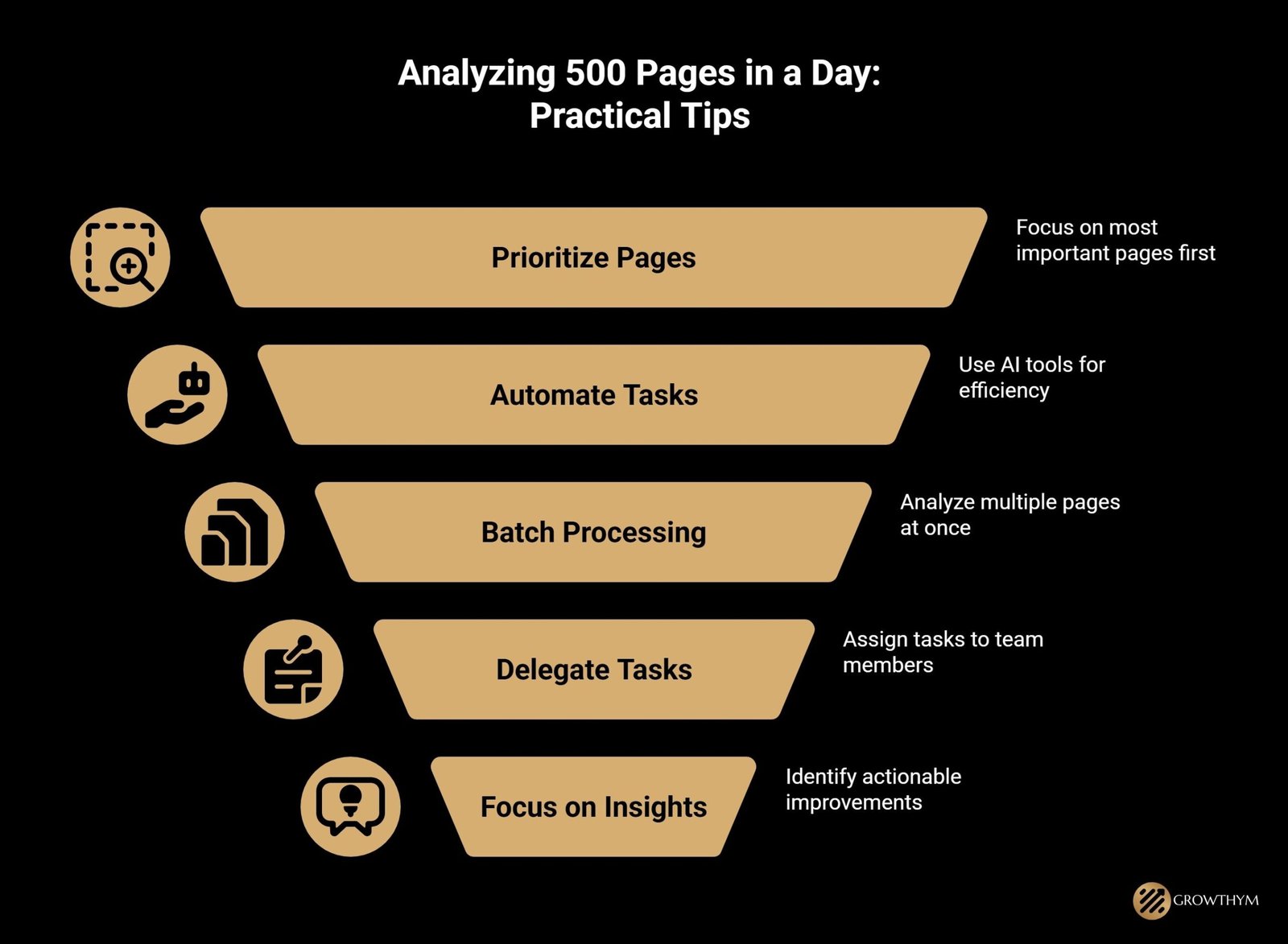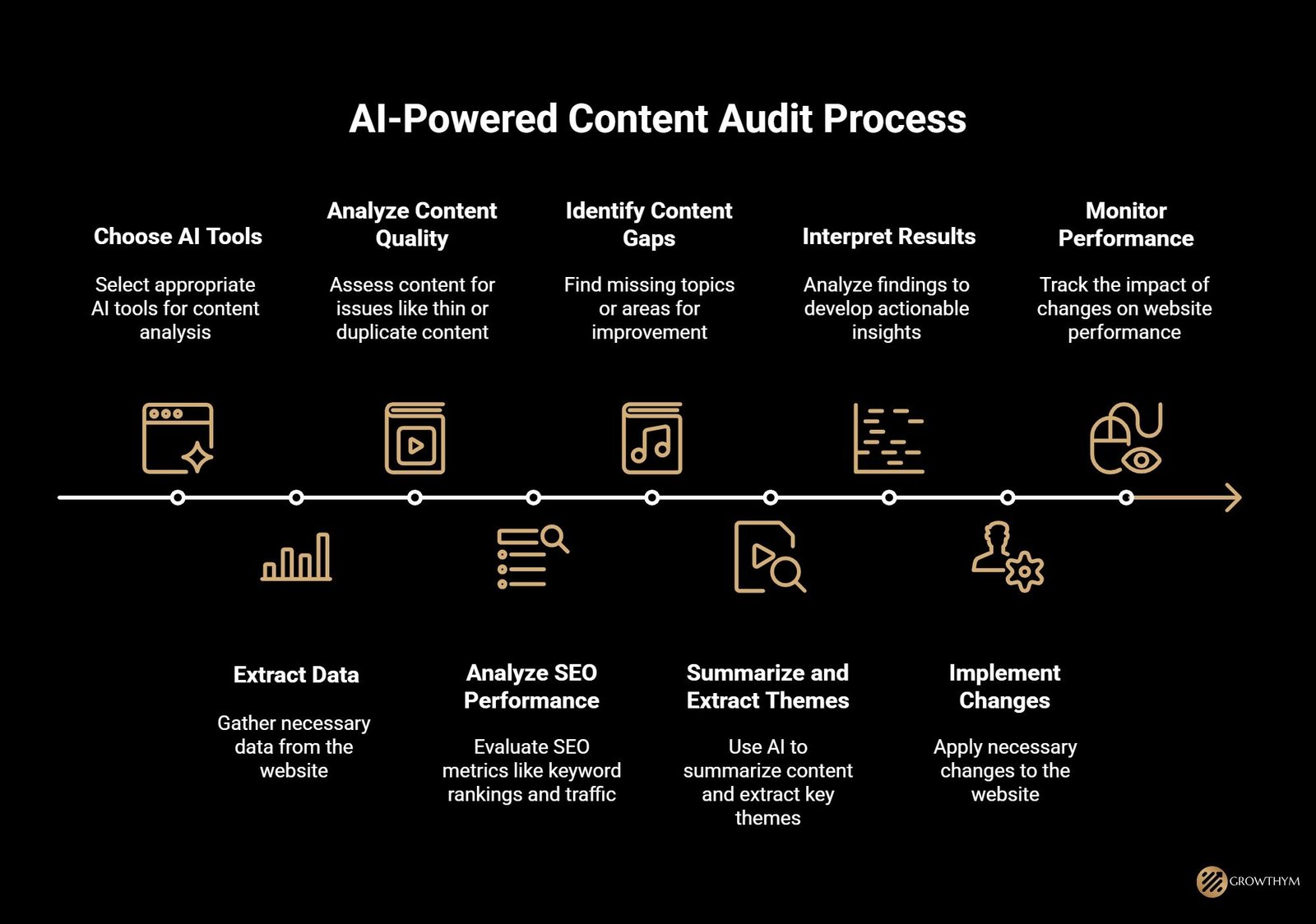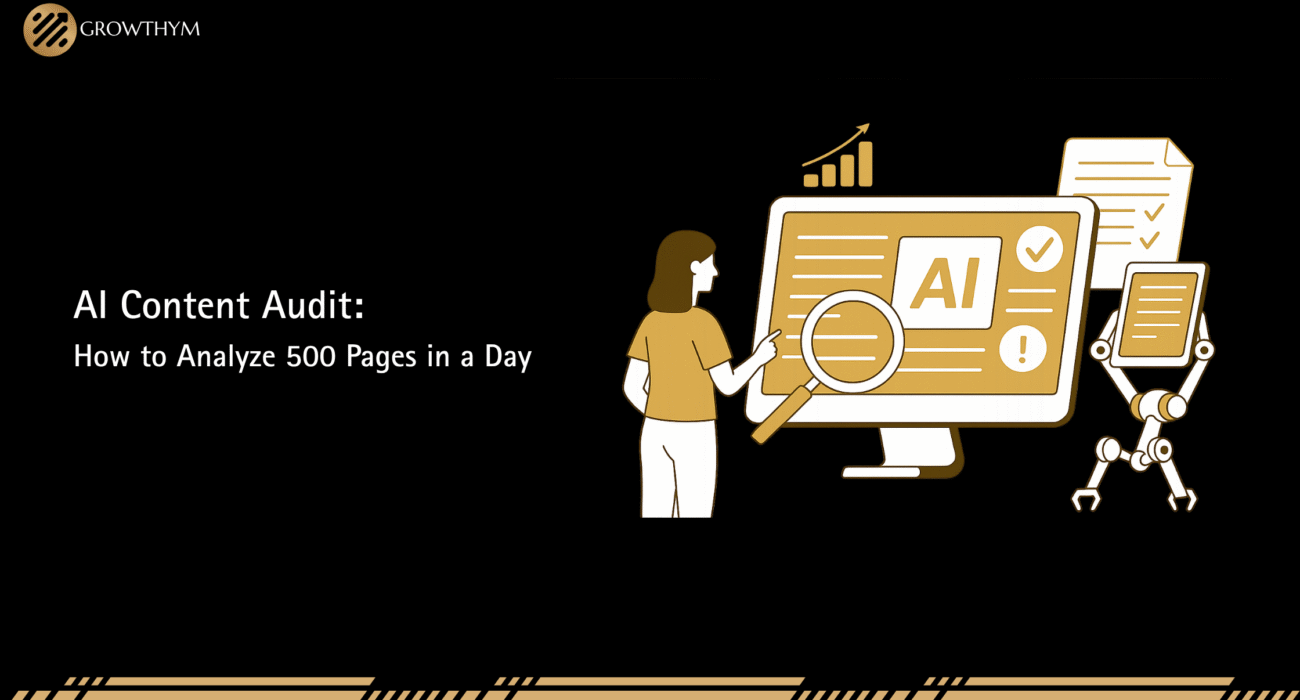Auditing hundreds of pages manually takes time. Errors hide in plain sight. Links break, facts go stale, and inconsistencies accumulate. The larger the content library, the harder it is to see patterns or decide what needs attention. Weeks of work can pass before the full picture emerges.
AI changes the rules. It scans content quickly. Flags duplicates, outdated pages, and underperforming posts. It identifies gaps in topics and alignment with brand voice. Insights arrive structured. Teams spend less time searching and more time acting — updating, consolidating, or removing content.
Speed is only part of the advantage. AI enforces consistency. Every page is analyzed through the same lens. Tone, readability, keyword usage, and engagement are captured. Bias fades. Nuances appear. Decisions gain clarity.
This guide shows how to run a content audit AI. You will learn which tools handle hundreds of pages in a day. You will see step-by-step processes to structure the audit. Templates and checklists ensure nothing slips through the cracks. By the end, sprawling content libraries become maps of insight — fast, accurate, and actionable.
What is a Content Audit AI — and Why It’s Critical
A content audit AI is a diagnostic tool. It reveals how your content performs, how it aligns with your brand, and where gaps hide. It exposes redundancy, outdated information, and opportunities that remain unseen in day-to-day operations.
The goals are clear. Optimize SEO. Align every piece with your brand voice. Improve engagement. Remove what no longer serves your audience. Ensure compliance with regulations. Each goal builds a stronger, more coherent content ecosystem.
Scale and speed define its value. A single person can scan a few pages a day. Hundreds of pages take weeks. AI sees patterns across entire libraries in hours. Duplicates, topic gaps, and underperforming content emerge. Connections that humans might miss appear. Decisions become informed, precise, and immediate.
A content audit is the foundation. It tells you what exists, what works, and what needs attention. It is not a one-time exercise. It is a map, updated and refined, guiding strategy at scale.
How to Choose the Right Content Audit AI?
A content audit AI identifies gaps, outdated pages, duplicates, and underperforming content. The right tools help you scale this process, uncover insights faster, and organize findings effectively. Selecting the right combination ensures accuracy, speed, and actionable results.
| Category | Examples | Purpose / Key Features | Practical Advice |
| SEO-focused | SEMrush, SurferSEO | Analyze keywords, backlinks, and traffic; highlight underperforming pages and ranking gaps; map content to search intent | Choose tools that handle batch processing and export structured reports; integrate with your CMS for updates |
| Content Quality & Tone | MarketMuse, ChatGPT (with structured prompts) | Evaluate readability, topic coverage, and brand voice alignment; detect inconsistencies and suggest rewrites | Feed real content examples; use structured prompts to ensure AI captures your tone |
| Workflow Management | Notion, Airtable, Google Sheets | Track audit progress, assign actions, and store findings in one place | Centralize insights to prevent loss; maintain a clear audit trail for team collaboration |

Benefits of AI Content Audits
AI changes how audits work. What once took weeks now takes a day. But speed is only the beginning.
- Speed: AI reads faster than any team. It scans, compares, and scores hundreds of pages in hours. You see the full picture without the long wait.
- Accuracy: Machines don’t tire. They don’t skip details or lose focus. Repetition doesn’t dull their work. That means fewer missed links, fewer duplicate entries, and fewer reporting errors.
- Strategy: An audit is only useful if it drives action. AI turns data into direction — which pages to fix, which to merge, which to remove. You don’t just clean content. You strengthen it.
- Consistency: AI holds every page to the same standard. Voice, tone, structure, SEO — all measured with precision. Every touchpoint sounds like your brand, everywhere your audience meets you.
Content AI Audit Best Practices — Beyond Tools
AI is a sharp tool. But it is not a mind. Use it to see patterns, not just flaws.
Detect Trends, Not Just Errors
AI can tell you where content breaks. But the real value lies in what it reveals — what your readers crave, what pages drive attention, what topics fall flat. Gaps tell a story. So do spikes. Study both. Let data shape your next move, not guesswork.
Keep Humans in the Loop
AI reads tone. But it doesn’t feel it. Words can be right and still sound wrong. Humans sense intent. They understand culture, humor, timing. After AI flags, humans decide. This partnership keeps your content real.
Think Continuous, Not One-Time
A single audit fixes today. Regular audits build tomorrow. Content ages fast — keywords shift, links die, intent changes. Keep the machine running. Let content audit AI tool scan weekly or monthly. Let it guide your next strategy.
How to Run a Content Audit with AI
Auditing content is a test. It shows what works and what hides in plain sight. Human eyes miss patterns. Pages pile up. Links break. Facts fade. Decisions wait.
AI content audit changes that. It sees the structure, the gaps, the mismatches. But insight alone is useless. You need a method.
Step 1: Inventory and Organize
Collect everything. Web pages, blog posts, landing pages, PDFs, social media content, email newsletters. Record metadata: publish date, author, traffic, backlinks, internal links. Tag content by type and purpose. Without structure, content audit AI output becomes noise. With structure, patterns emerge. The audit starts here, in the order you create.
Step 2: Define Audit Goals
Know why you audit. SEO, engagement, brand alignment, compliance — each goal shapes the lens. Measure keywords, traffic, and backlinks for SEO. Track clicks, shares, and dwell time for engagement. Check tone, readability, and formatting for brand voice. Goals guide AI content auditI, filter noise, and give purpose to findings.
Step 3: Feed Content into AI Tools
Batch upload content. Use prompts that tell AI exactly what to look for. Examples: “Identify readability issues and tone mismatches” or “Highlight duplicate topics and outdated content.”
Test prompts on small batches first.Adjust language until outputs are meaningful. Then scale. AI sees patterns invisible to humans. It spots gaps, overlaps, and inconsistencies.
Step 4: Identify Patterns
Low-performing pages appear. Duplicates surface. Outdated facts shine through. Gaps in topics become clear. Content audit AI shows correlations: engagement, traffic, content type, and tone. Patterns emerge across hundreds of pages. Decisions no longer rely on hunches. They rest on structured insight.
Step 5: Take Action
Decide fast. Update, consolidate, or delete. Updates may rewrite content for clarity, SEO, or brand voice. Consolidation merges overlapping topics. Deletion removes clutter. Every action affects performance. Each change shapes the library. The audit is useless unless action follows insight.
Step 6: Report and Iterate
Document findings. Dashboards, spreadsheets, visual reports. Highlight priorities and quick wins. Share with teams. Repeat the audit periodically. Each iteration improves prompt design. Each pass finds new gaps. Auditing is not a one-time task. It is a cycle. Measure. Act. Refine.

Content Audit AI Template — Structure for Action
Auditing hundreds of pages is overwhelming. Without structure, insights scatter. Templates reduce cognitive load. They keep the team focused. They make data actionable. Every page gets a clear place in the audit. Decisions become visible.
Suggested Table Format:
| Page URL | Content Type | Publish Date | Word Count | SEO Score | Engagement Metrics | Brand Voice Alignment | Recommended Action |
| Example: /blog/ai-audit | Blog Post | 2025-01-10 | 1200 | 72 | 450 views, 3 shares | Consistent | Update tone and keywords |
| Example: /landing/ai-tools | Landing Page | 2024-11-05 | 600 | 65 | 200 views, 1 share | Needs review | Optimize for SEO & readability |
How it Helps:
- Centralizes all key metrics in one place.
- Highlights gaps and patterns across hundreds of pages.
- Makes assigning actions simple: update, consolidate, or delete.
- Reduces the mental load of keeping track of every detail.
A template is not just a table. It is a map. It guides teams from raw data to decisive action.
Content Audit AI Checklist — Ensuring Nothing Slips Through
A content audit AI checklist keeps you honest. It forces consistency. It shows where the work is.
- Keywords: Are they relevant? Are they placed naturally? Missing anywhere? Weak keywords hide in headings, meta descriptions, or body copy. Patterns emerge only when all pages are measured the same.
- Brand Tone: Does the content sound like you? Blogs, landing pages, social posts — all must match. Tone drift confuses readers. AI can spot subtle differences humans miss.
- Links: Broken links, redirects, outdated references. They frustrate users. They harm SEO. Every URL matters. Content audit AI scans fast. It flags what humans cannot see at scale.
- Readability & Formatting: Headings, bullets, paragraphs, visuals. Are they easy to read? Long walls of text lose attention. Structure shapes comprehension. AI highlights what slows readers down.
- Compliance & Accessibility: Laws and standards are non-negotiable. Alt text, color contrast, disclaimers — missing details matter. AI can catch what manual checks overlook.
- Engagement Metrics: Views, clicks, shares, conversions. Underperforming content hides patterns. AI shows trends across hundreds of pages. It reveals what works, what fails, and why.
Conclusion
An AI content audit is not about replacing people. It’s about giving them sharper tools. Machines see the patterns; humans decide what those patterns mean. Together, they create smarter, faster, more consistent content systems.
AI doesn’t just save time — it gives you clarity. You see what works, what doesn’t, and where your message starts to fade. You act with precision, not guesswork. That’s how brands grow — through informed action, not endless manual checks.
At Growthym, we help brands do exactly that.
We run AI-powered GA4 audit, content audits, SEO audits that define brand voice frameworks, and optimize for SEO — turning your content into a growth engine that scales intelligently.
Let’s build a smarter, stronger content system for your brand.
Talk to Growthym’s AI Strategy Team today.

